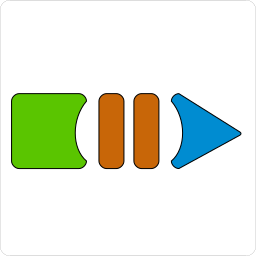This question arises almost daily on Reddit in various forms. In my opinion, the most effective way to learn coding is by contributing to an open-source project. Many may assume that one needs advanced programming skills to contribute to significant projects like Gimp or Blender, but that’s not the case. Although the path to your first merge (integrating your code into the project) may be challenging, it’s an excellent learning opportunity. So, where do you start? First, understand how the application you’re interested in is compiled.
From Source Code to Finished Program
This step can be daunting for beginners. Most open-source projects’ source code is available on Github.com. You can download it as a zip archive or clone it by using Git. Familiarizing yourself with Git is essential for aspiring developers. The README.md file usually contains instructions on compiling or executing the project. While this process varies in complexity depending on the language and project, consider it your first milestone in becoming a developer. You may need to install an Integrated Development Environment (IDE) or fulfill dependencies. If you encounter difficulties, forums like Stack Overflow or the project’s Discord server can provide assistance. Once you understand how the project is built and executed, you can modify the source code to suit your preferences.
Read – Modify – Experiment
Next, immerse yourself in the source code. You might think, “But I can’t code yet! How can I understand the code?” At the beginning, focus on what you can comprehend. Programmers often include comments in the code and use meaningful names for files, variables, classes, and functions. Start by examining the file names in the repository. If something catches your interest, open the file and explore its contents. Sometimes, you’ll encounter strings that appear in the finished program, which are ideal for experimentation. By reading, modifying, and experimenting with the code, you’ll gradually overcome the intimidation of large projects and realize that complex systems are built from simple components.
Learning to Program
As you become familiar with the project’s structure, consider learning the programming language in parallel. However, basic programming knowledge is often sufficient to contribute to larger projects. Most functions or methods consist of simple constructs like IF statements or loops, regardless of the programming language. Functions are typically straightforward, requiring only a basic understanding of the language to grasp their functionality. If you encounter code that confuses you, seek help online. Modern tools like ChatGPT can simplify complex code explanations. Don’t hesitate to ask questions and utilize available resources.
Debugging
Additionally, monitor the project’s issue tracker. Many projects label beginner-friendly bugs as “good first issues.” These bugs are relatively easy to fix and remain unresolved to provide beginners with opportunities to contribute. Descriptions often contain hints on fixing the bugs. After resolving a bug, you’ll face new challenges, such as forking the project, creating a pull request, and undergoing code review. Only when your pull request meets all requirements will it be merged into the project.
Conclusion
Fixing a bug or implementing a new feature in a program and knowing that thousands of users can benefit from your contribution is immensely gratifying. Though reaching the stage of a merged pull request requires hard work, the learning experience is invaluable. You’ll gain more knowledge and skills than simply typing out exercises from a programming textbook.


Leave a Reply